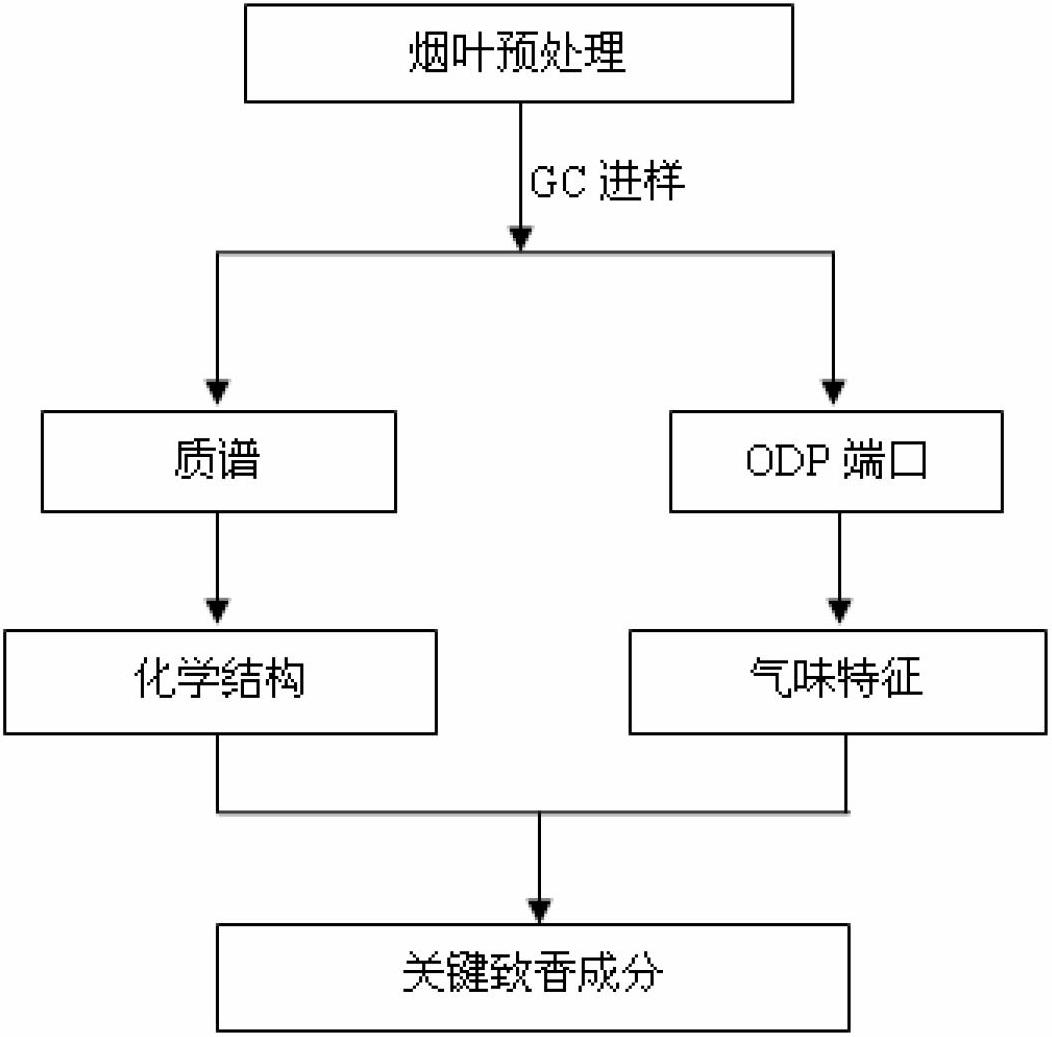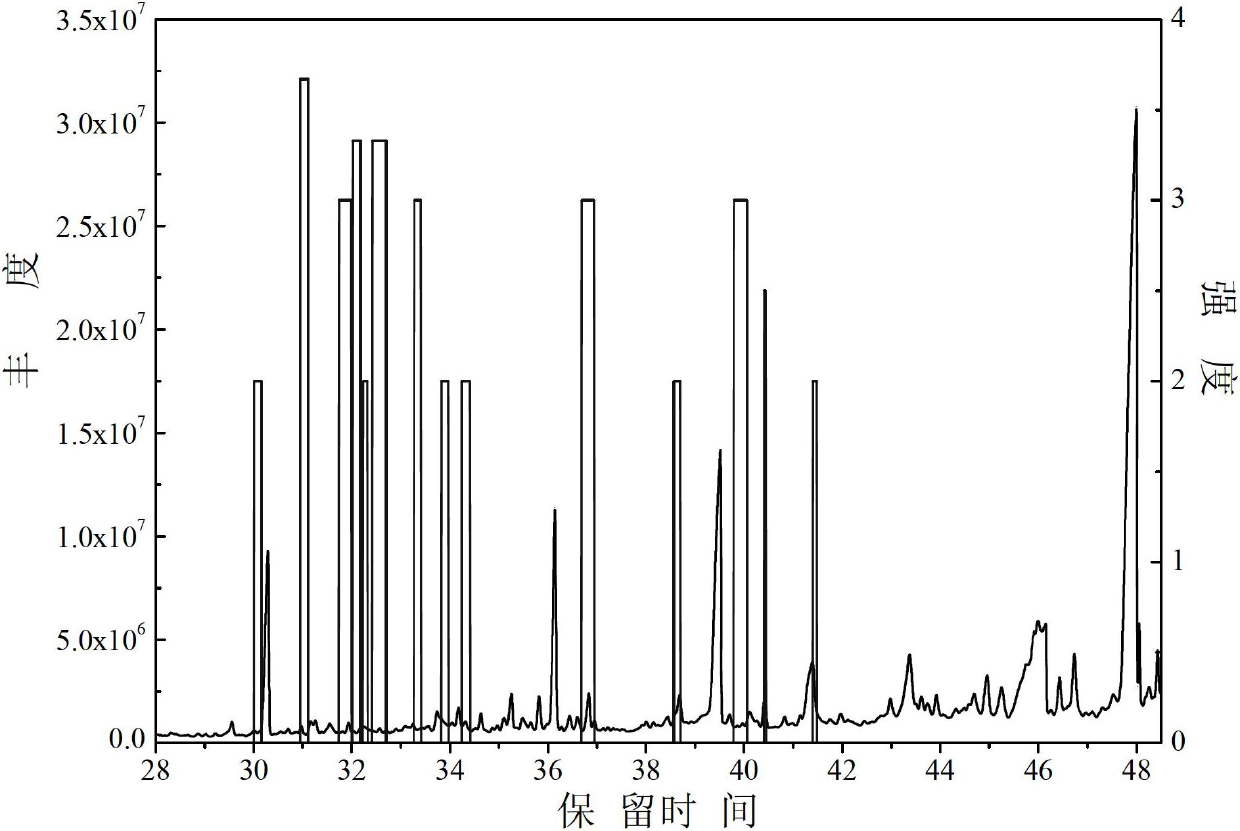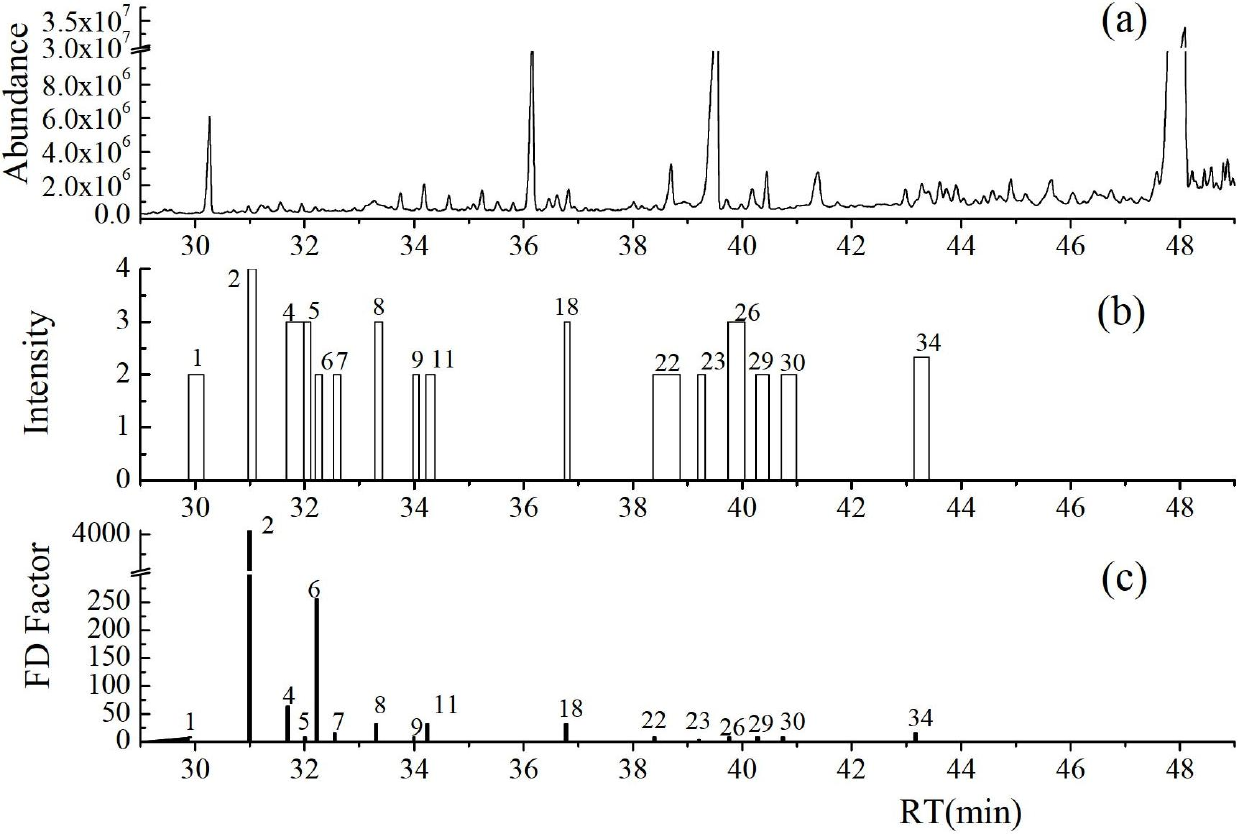Method for analyzing and identifying key aromatic substances in tobacco leaf
A technology for aroma-causing substances and tobacco leaves, applied in the field of tobacco, can solve the problem that the instrument detection technology cannot discriminate the aroma contribution of aroma compounds, and achieve the effect of good technical guidance and data support
- Summary
- Abstract
- Description
- Claims
- Application Information
AI Technical Summary
Problems solved by technology
Method used
Image
Examples
Embodiment 1
[0036] The following experimental methods were used to analyze the aroma-inducing substances in flue-cured tobacco leaves:
[0037] (1) Use 15ml of anhydrous ether as a solvent to extract the aroma-causing substances in 500mg of tobacco powder, and add 3ml of tartaric acid solution to remove nicotine. The solution was concentrated to 500 μL;
[0038] (2) Using GC-MS / O to analyze and identify key aroma substances in tobacco leaves: inject the concentrated solution of key aroma substances obtained in step (1) into GC-MS / O, and the concentrated solution enters the gas chromatograph and passes through Y Half of the tube enters the mass spectrometer, while the other half enters the ODP instrument to obtain GC spectra, MS total ion current diagrams, aroma intensity diagrams and FD factor diagrams respectively; image 3 shown.
[0039] GC-MS conditions: GC analysis detection conditions: GC inlet temperature 250°C; sample volume: 3.0 μL; splitless injection; carrier gas is helium, a...
Embodiment 2
[0053] Aroma-inducing substances in Burley tobacco leaves were analyzed by the same experimental method as flue-cured tobacco leaf samples. GC-MS / O analysis results of Burley tobacco leaves (such as Figure 4 and Table 2) as follows:
[0054] Among the 15 aroma active compounds in Burley tobacco leaves, the intensity is the largest, and the compound that contributes the most to the aroma of tobacco leaves is β-Damascenone and an unknown substance (number 6) with a fresh green aroma, both of which have an intensity of 4 , β-Damascenone is sweet, honey, rose, and pleasant. Substances with relatively small intensity include methyl eugenol, dihydroactinolactone and 2 unknown substances (serial numbers 24 and 30). Fragrance, cool breath, their intensity is 3. There are many compounds with an aroma intensity of 2, and there are 7 compounds in total, namely solanone, β-damascone, geranyl acetone, macrostigmatrienone 4 and 3 unknown substances (numbered 8, 10, 12 ), the aroma of s...
Embodiment 3
[0062] The same experimental method as that of flue-cured tobacco leaves was used to analyze the aromatizing substances in oriental tobacco leaves. GC-MS / O analysis results of oriental tobacco leaves (such as Figure 5 and Table 3) as follows:
[0063] Fourteen aroma-active compounds were perceived by sniffers in oriental tobacco leaves. Among them, the compound with the highest aroma intensity is β-Damascenone, with an intensity of 4, which has a sweet, honey, rose, and pleasant smell. There are 6 aroma compounds with an intensity of 3, namely methyl eugenol, dihydroactinolactone and 4 unknown compounds (numbered 6, 8, 9, 27). Methyl eugenol has frankincense, fruity, milky, comfortable smell, and dihydroactinolactone has green and cool smell. The odors of the 4 unknown compounds are green, irritating, fresh, green, irritating, unpleasant, weakly irritating green, sour, woody, spicy, and powdery. The aroma compound with an intensity of 2.5 is macrostigmatrienone 4, which h...
PUM
 Login to View More
Login to View More Abstract
Description
Claims
Application Information
 Login to View More
Login to View More - R&D
- Intellectual Property
- Life Sciences
- Materials
- Tech Scout
- Unparalleled Data Quality
- Higher Quality Content
- 60% Fewer Hallucinations
Browse by: Latest US Patents, China's latest patents, Technical Efficacy Thesaurus, Application Domain, Technology Topic, Popular Technical Reports.
© 2025 PatSnap. All rights reserved.Legal|Privacy policy|Modern Slavery Act Transparency Statement|Sitemap|About US| Contact US: help@patsnap.com



